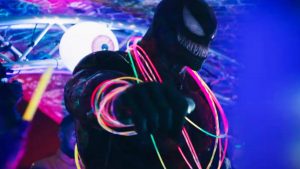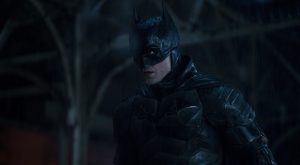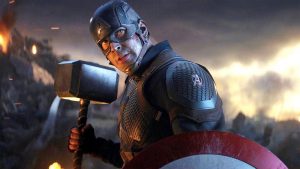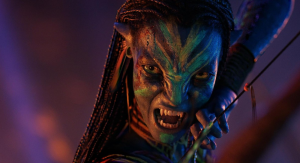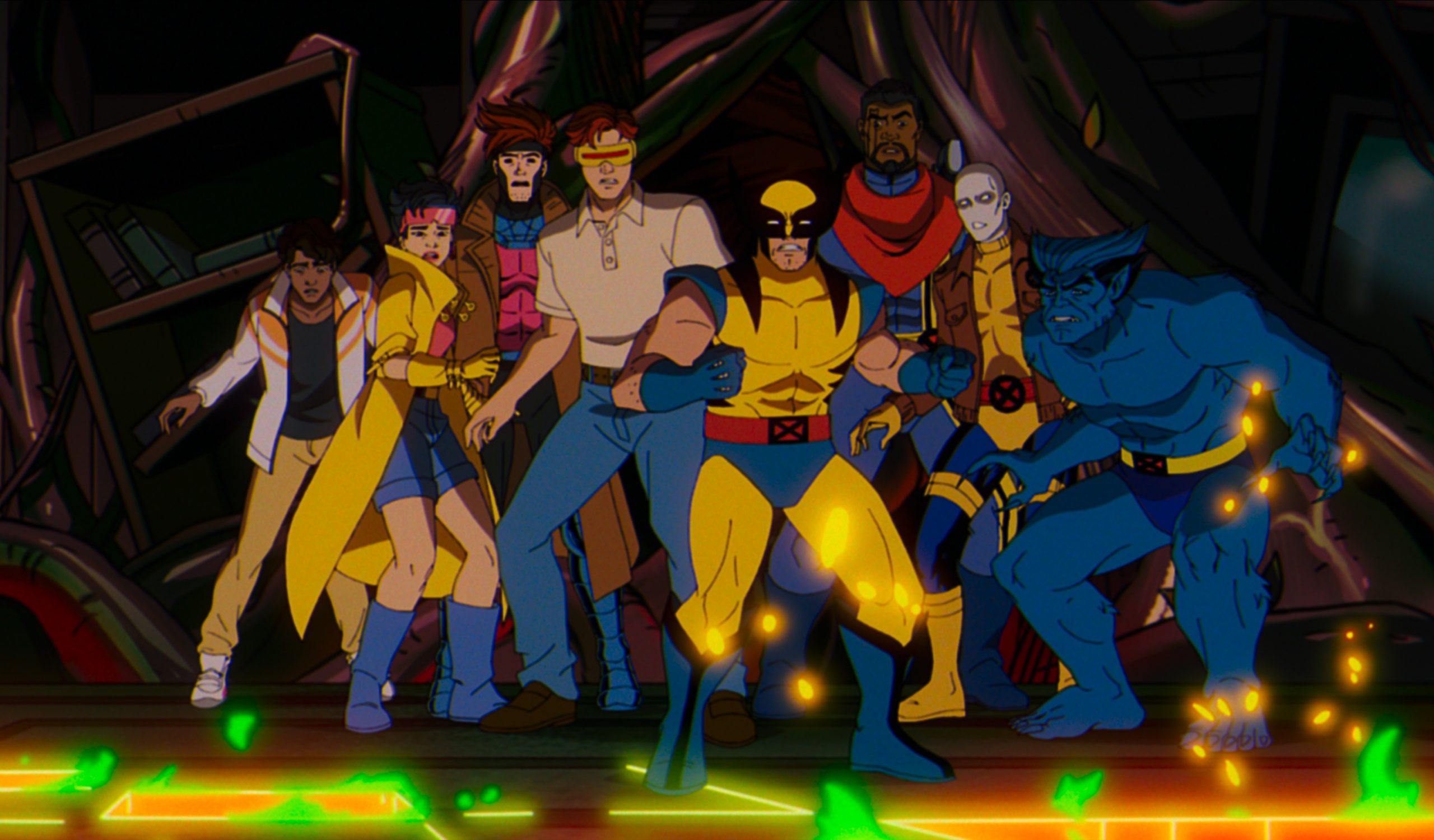
This X-Men ’97 article contains spoilers.
“They shall know my Inferno!” cries the Goblin Queen early in X-Men ’97‘s third episode. Now, the Goblin Queen has had a rough day, which began with her thinking that she was the real Jean Grey and ended with the revelation that she was a clone created by evil (but fashionable) geneticist Mr. Sinister. Her heel turn came so quick that she really didn’t have time to workshop her villain monologues.
Whatever the shortcomings in her baddie banter, the Goblin Queen makes up for it with evil powers. She immediately begins transforming the X-Mansion into a Hellscape, complete with a giant head in an elevator and a vision of Xavier as a monster from the anime classic Akira. Wild as these transformations are, they have nothing on the comic book storyline that inspired it.
The Inferno crossover from 1988 and 1989 was peak weird Marvel, something the cartoon adaptation doesn’t quite match.
Rise of the Goblin Queen
Modern comic book readers might find this hard to believe, but back in the ’80s, company-wide crossovers were kind of a new thing. When the X-Men-focused Mutant Massacre crossover from 1986 became a hit, Marvel started demanding yearly line-wide adventures for the mutants.
The Inferno event served as the culmination of an ongoing storyline that started with X-Factor #1 in 1986, in which Cyclops abandoned his wife Madelyne Pryor and son Nathan the very second that he learned that his long-lost love Jean Grey was still alive. Cyke, Jean, and the other original X-Men — Iceman, Beast, and Angel — launched a new team called X-Factor. Inspired by Ghostbusters, the original concept for X-Factor involved the team posing as mutant exterminators, humans who hunt mutants. But when X-Factor captured the mutants, they would in fact take them to a safe place to protect them.
The mutant hunter concept didn’t last long, but it was enough for the current X-Men lineup to not notice the resemblance between X-Factor and their founding members. And when the X-Men appeared to die during the Mutant Massacre crossover, X-Factor forgot about making amends with their former colleagues.
At the same time, Madelyne Pryor tried to ease her pain by spending time with Cyclop’s brother Havok (whose own girlfriend Polaris was under the control of the evil mind manipulator Malice), and hanging out with the X-Men. But when the hurt of Cyke’s rejection overtook her, Madelyne left herself vulnerable to manipulation by the demons S’ym and N’astirh. The demonic duo recruited Maddie as part of their rebellion against the leader of HellLimbo, Illyana Rasputin aka Magik of the New Mutants.
S’ym and N’astirh promised Maddie the power she wanted to take revenge, transforming her into the Goblin Queen and giving her the ability to transform New York City into literal Hell.
A New York Nightmare
As strange as the animated Inferno gets, it never hits the extremes of the comics. Uncanny X-Men #239, written by Chris Claremont and penciled by John Romita Jr., opens with a trio of tacky tourists entering an elevator at the Empire State Building. When the doors close, the elevator transforms into a monstrous face, and we hear the family pleading for their lives as the lift consumes them.
Although pitched as a kid-friendly spin-off of X-Factor, X-terminators #1, written by Louise Simonson and penciled by Jon Bogdanove, begins with demons capturing a bearded old weirdo (based on E.C. Comics publisher William Gaines) and melding his flesh until he’s a grotesque minion.
The horror didn’t remain contained among the mutants. Because the Goblin Queen changed all of New York City into Hell, Inferno spilled out past the X-books into most comics Marvel published at the time, including The Fantastic Four, Avengers, and The Amazing Spider-Man.
Some of the crossover comics took advantage of the spooky premise to enhance their characters. In Spectacular Spider-Man #146 and #147, writer Gerry Conway and penciler Sal Buscema had Hobgoblin (the second Hobgoblin, Jason Macendale, not Ned Leeds) make a deal with N’astirh to become an actual demon monster, and not just a knock-off of the Green Goblin.
Conversely, Avengers #300, written by Walter Simonson and penciled by John Buscema, is more interested in following Gilgamesh, one of the worst members of Earth’s Mightiest Heroes, as he fights against two other X-Men villains from the era, Nanny and Orphan Maker.
In short, much of Inferno worked like other Marvel crossovers, with some books embracing the concept and others begrudgingly playing along.
Daredevil Hits Rock Bottom. And Vacuums.
Given the religious implications of New York becoming Hell, it’s no surprise that the world’s most guilty Catholic Daredevil was involved in Inferno. What is a surprise is the threat Daredevil must face: a vacuum cleaner.
Written by Ann Nocenti and penciled by John Romita Jr., Daredevil #262 splits its attention between Black Widow and Karen Page trying to get some kids through the demon infested subway and Daredevil battling a vacuum cleaner.
As ridiculous as this sounds, it isn’t quite as bad as all that. First of all, the vacuum is both possessed and infected with the techno-organic virus (the thing you saw crawling over infant Nathan in X-Men ’97 episode 3), so… you know, it’s a tough vacuum. Second, Daredevil had just been trounced by the Kingpin’s newest assassin, the mutant known as Typhoid Mary.
Matt Murdock being Matt Murdock, he uses his defeat by Dustbuster as an opportunity to go soul searching. Matt imagines his former mentor Stick admonishing him, and questions not only his mission as a superhero but also his place in the cosmic order. In other words, as silly as the story sounds, Nocenti keeps everything within Matt’s character, resulting in a surprisingly heavy issue.
The Goblin Queen’s Inferno X-Tinguished
In X-Men ’97, the Inferno lasted half an episode. In the comics, it lasted a year. Madelyne doesn’t meet as dark an end in the cartoon, though. This Jean clone, having snapped out of her Goblin Queen mode by remembering the love she has for Nathan, decides to start a new life as “Madelyne,” walking away from Xavier’s School with new optimism for the future now that she knows who she truly is. Things are much messier for Madelyne in the comics, although she did eventually reappear with a new identity down the line.
Both the comic and the X-Men ’97 episode also end with Jean restored to the X-Men and some hard choices to make about young Nathan, who is now infected with the techno-organic virus. His parents are forced to send him to the future with Bishop in order to save their son, which we all know will lead to some more confusing timey-wimey stuff with Nathan and the return of a fan-favorite from the ’90s. No, it won’t be Adam X the X-Treme, but it will be cool.
However, X-Men ’97 will probably never get as nuts as the comics. And that’s probably a good thing. After all, as long-time readers know, X-Men continuity can be its own kind of Hell.
X-Men ’97 is streaming now on Disney+.
The post X-Men ’97’s Goblin Queen Inferno Wasn’t Nearly as Weird as in the Comics appeared first on Den of Geek.

